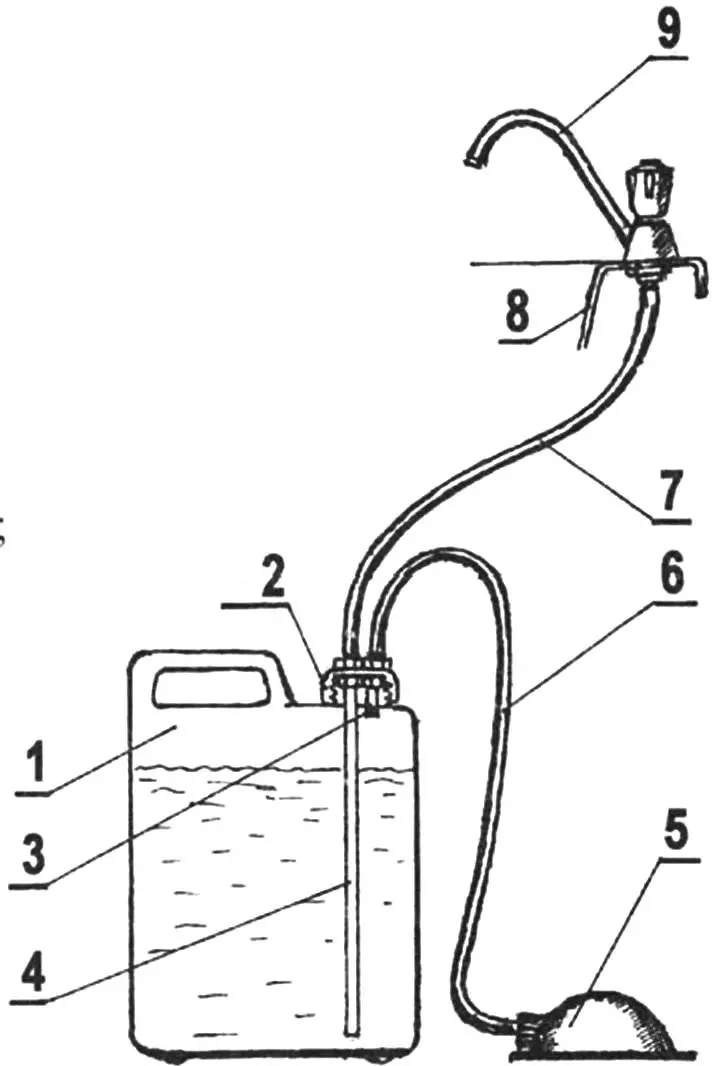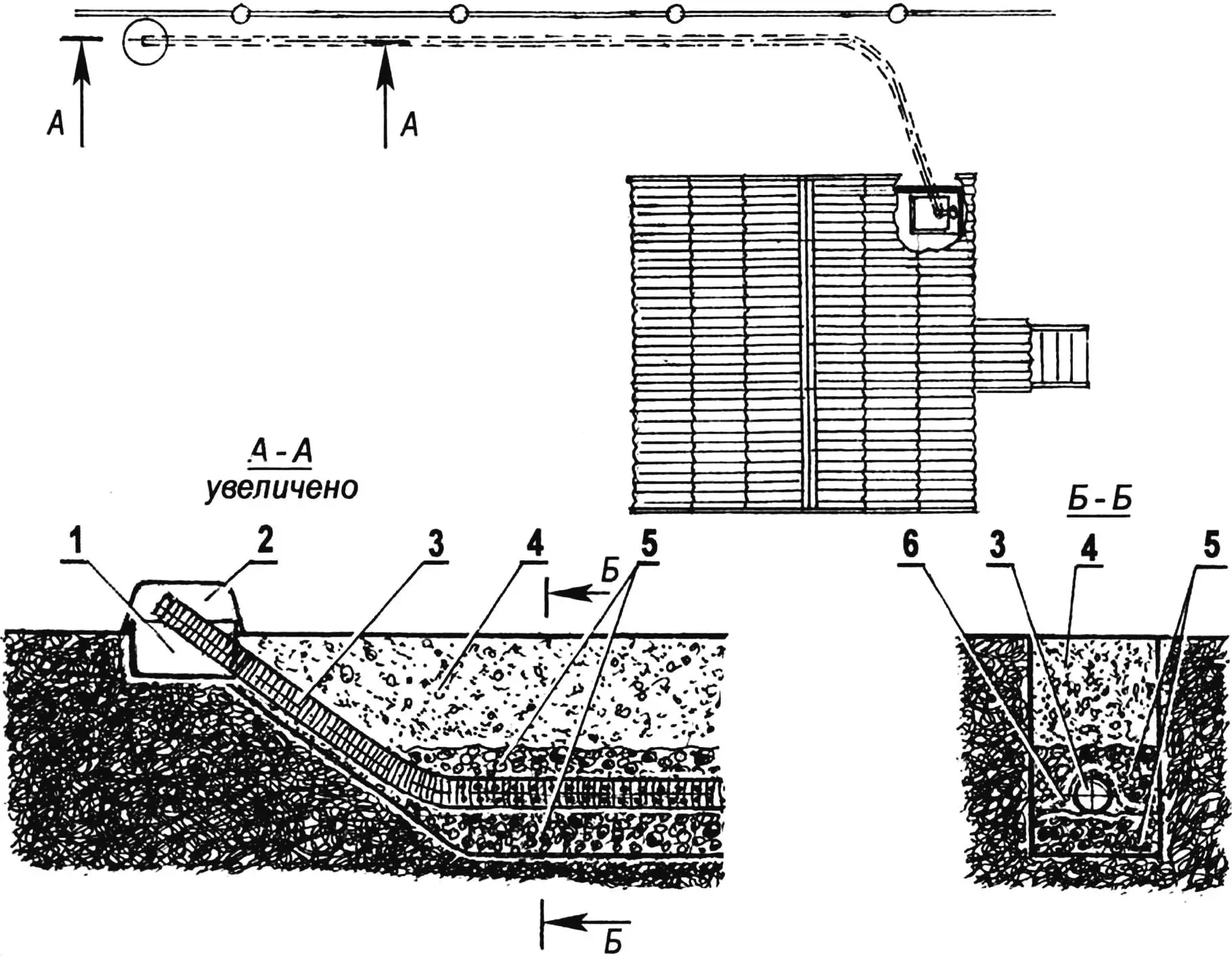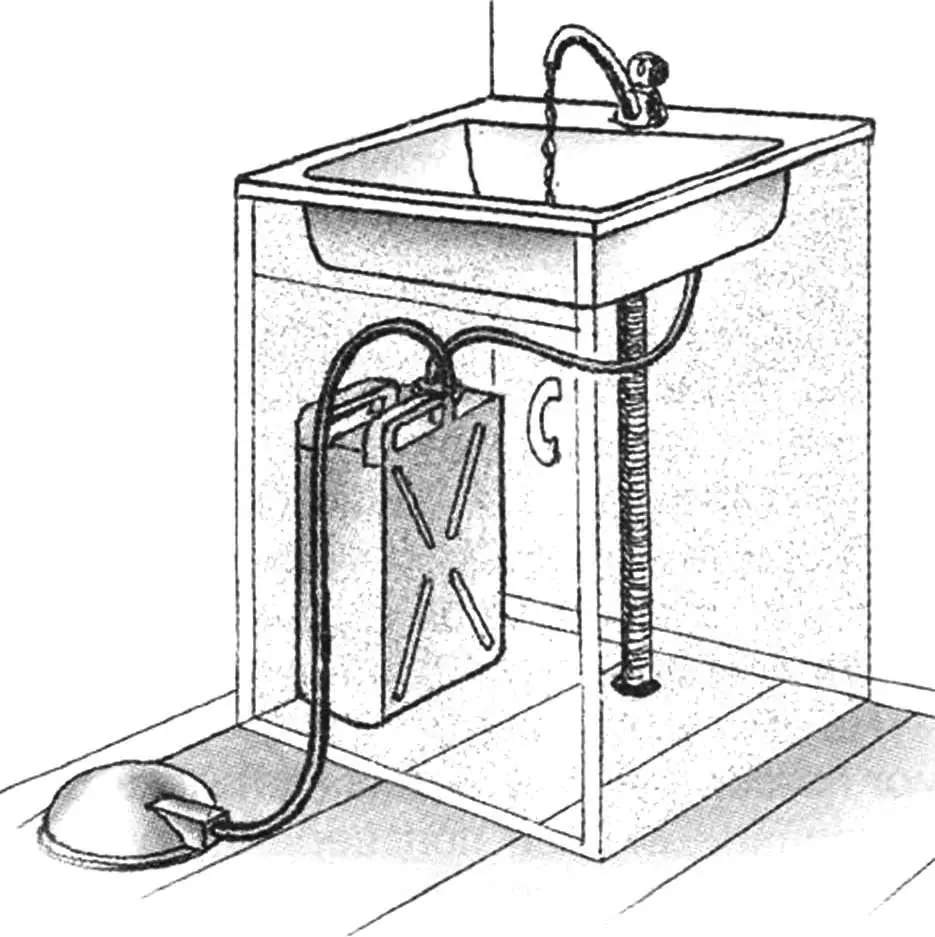To live comfortably in the countryside, you don’t actually need much — electricity, plumbing, a decent toilet, and a sewage system.
Electricity usually isn’t a problem — even if your summer cottage area isn’t connected to the power grid, you can always buy a portable gasoline generator and enjoy all the benefits that electricity provides.
As for the toilet — those used to city comforts can easily purchase a modern chemical toilet.
But when it comes to plumbing and sewage… You can’t just buy them in a store, and decorating the kitchen with a hanging hand-washer and a waste bucket isn’t really appealing.
So, I’d like to share my experience in creating a comfortable summer kitchen with the simplest water supply and sewage system.

Country house water supply system:
1 — water canister; 2 — canister cap; 3 — short nozzle; 4 — long nozzle; 5 — pump; 6 — air hose; 7 — water hose; 8 — sink; 9 — faucet
First, I installed a regular kitchen cabinet with a sink. Above the sink, I mounted a hand-washer, and inside the cabinet I placed a bucket for dirty water. Visually, everything looked great, but at least twice a day I had to carry out the full bucket and look for a place to pour it out. So I started thinking about a simple sewage solution.
After reading up on the topic, I figured I needed something like a leach field. First, I bought a flexible corrugated plastic hose — these are typically used for electrical wiring and come in various diameters. I chose a diameter that could easily be connected to the sink drain.
I cut a hole in the floor and ran the hose underneath the house, then outside through a shallow trench about a spade’s depth, leading it to the fence. Along the fence, I dug a deeper trench — about 0.5 meters. It’s worth noting that my plot naturally slopes toward that side, so I had no trouble with water flow later.
After laying a 10-cm layer of gravel at the bottom of the trench, I placed a segment of the hose on top. Beforehand, I had punctured it with numerous holes using a 4-mm nail embedded in a wooden handle. I then covered that section with nylon mesh (the kind used for window screens), and filled the trench halfway with gravel. Finally, I covered it with soil.
I left the end of the hose above the ground, plugged the outlet with a cap, and covered it with a casing made from a plastic basin and bucket (this allows the hose to be flushed or cleaned if needed).

Sewage trench system on a summer plot:
1, 2 — hose outlet casing; 3 — corrugated plastic hose; 4 — soil; 5 — gravel; 6 — nylon mesh
And that’s basically it. With a daily water usage of one or two buckets, the trench absorbs it with no problem. I also bought a mesh filter for the sink — otherwise, kitchen debris would clog the drain quickly and require frequent cleaning.
Once the bucket under the sink was gone, the wall-mounted hand-washer started to look outdated. Since there’s no centralized water supply in our area and we have to carry water from a well — I had to think of a simple water supply solution.
Inside the cabinet under the sink, I placed a 10-liter plastic canister (we used it to fetch water from the well). I fitted two metal nozzles into its cap — as shown in the diagram — and connected one to the sink faucet via a rubber hose and the other to a foot pump (like the ones used for inflating boats or air mattresses). A few pumps — and water starts flowing from the tap. Now our summer kitchen is as comfortable as any city one!
I. KLINSKY



